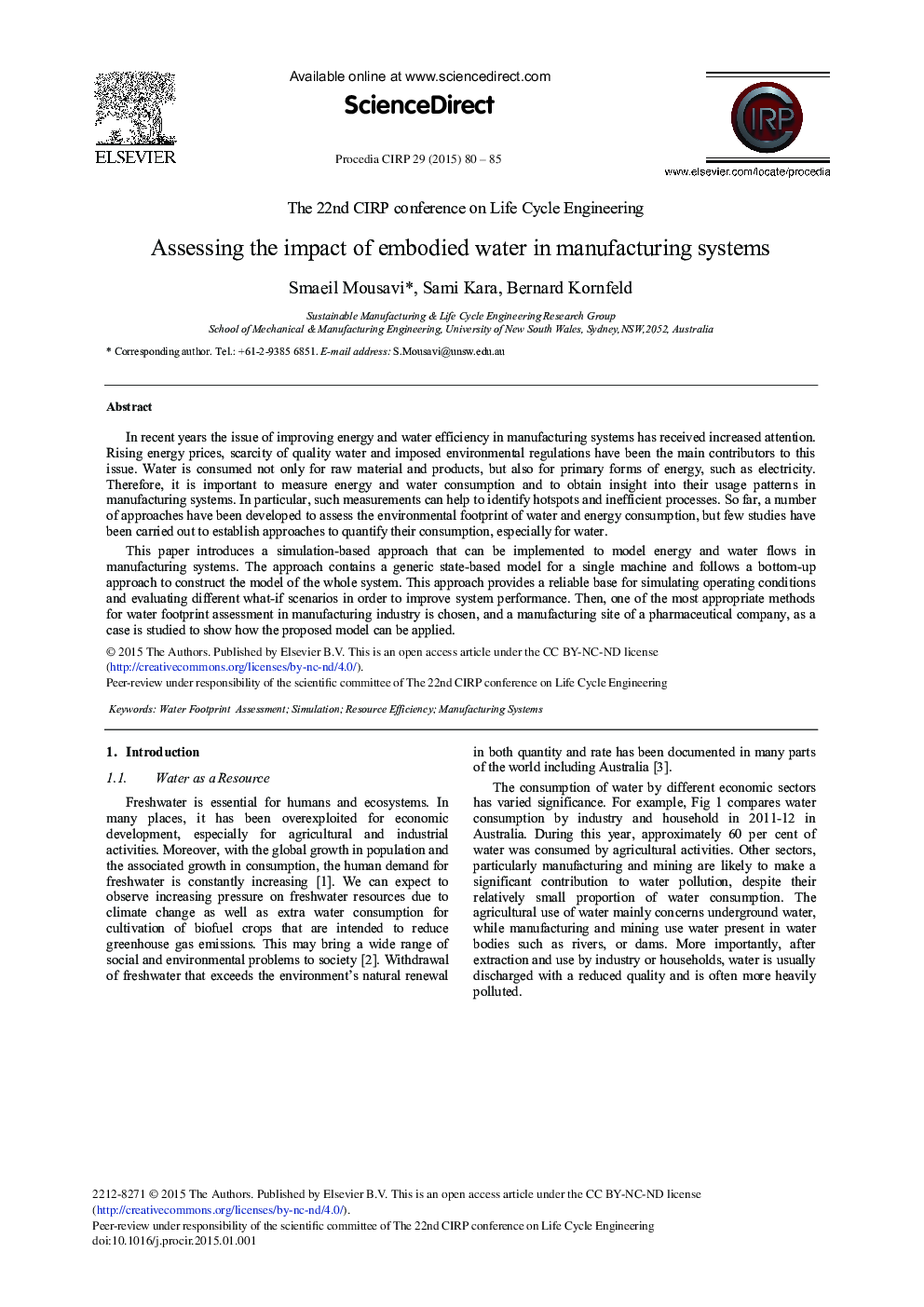| Article ID | Journal | Published Year | Pages | File Type |
|---|---|---|---|---|
| 1699748 | Procedia CIRP | 2015 | 6 Pages |
In recent years the issue of improving energy and water efficiency in manufacturing systems has received increased attention. Rising energy prices, scarcity of quality water and imposed environmental regulations have been the main contributors to this issue. Water is consumed not only for raw material and products, but also for primary forms of energy, such as electricity. Therefore, it is important to measure energy and water consumption and to obtain insight into their usage patterns in manufacturing systems. In particular, such measurements can help to identify hotspots and inefficient processes. So far, a number of approaches have been developed to assess the environmental footprint of water and energy consumption, but few studies have been carried out to establish approaches to quantify their consumption, especially for water.This paper introduces a simulation-based approach that can be implemented to model energy and water flows in manufacturing systems. The approach contains a generic state-based model for a single machine and follows a bottom-up approach to construct the model of the whole system. This approach provides a reliable base for simulating operating conditions and evaluating different what-if scenarios in order to improve system performance. Then, one of the most appropriate methods for water footprint assessment in manufacturing industry is chosen, and a manufacturing site of a pharmaceutical company, as a case is studied to show how the proposed model can be applied.
